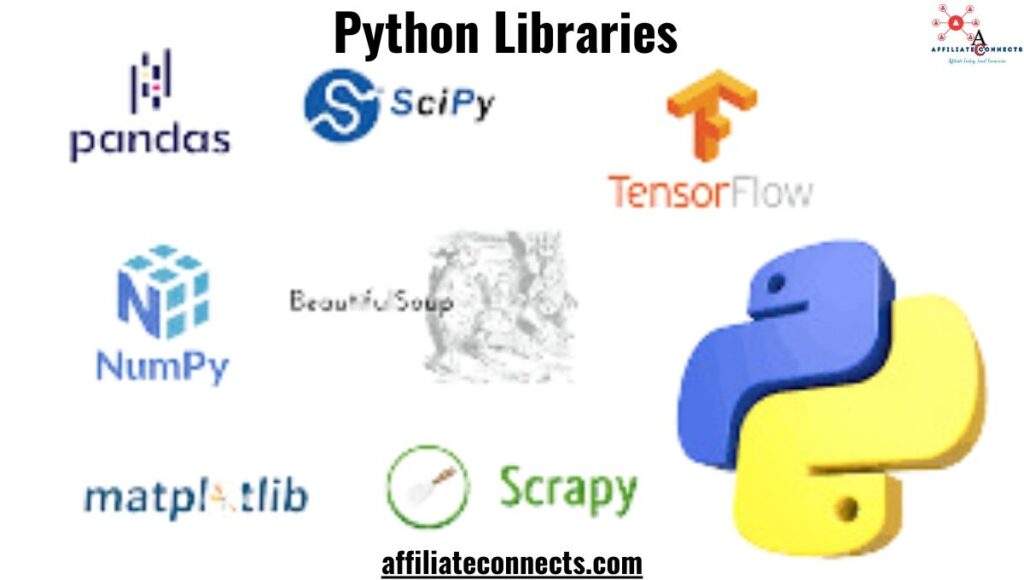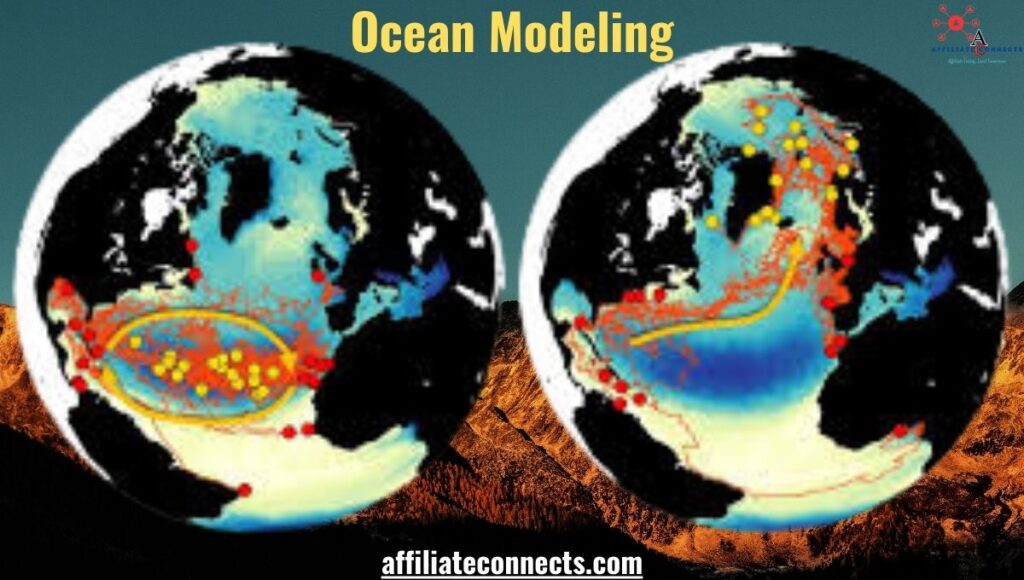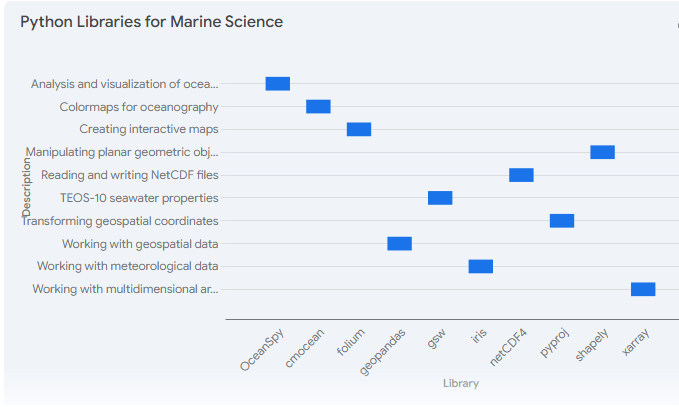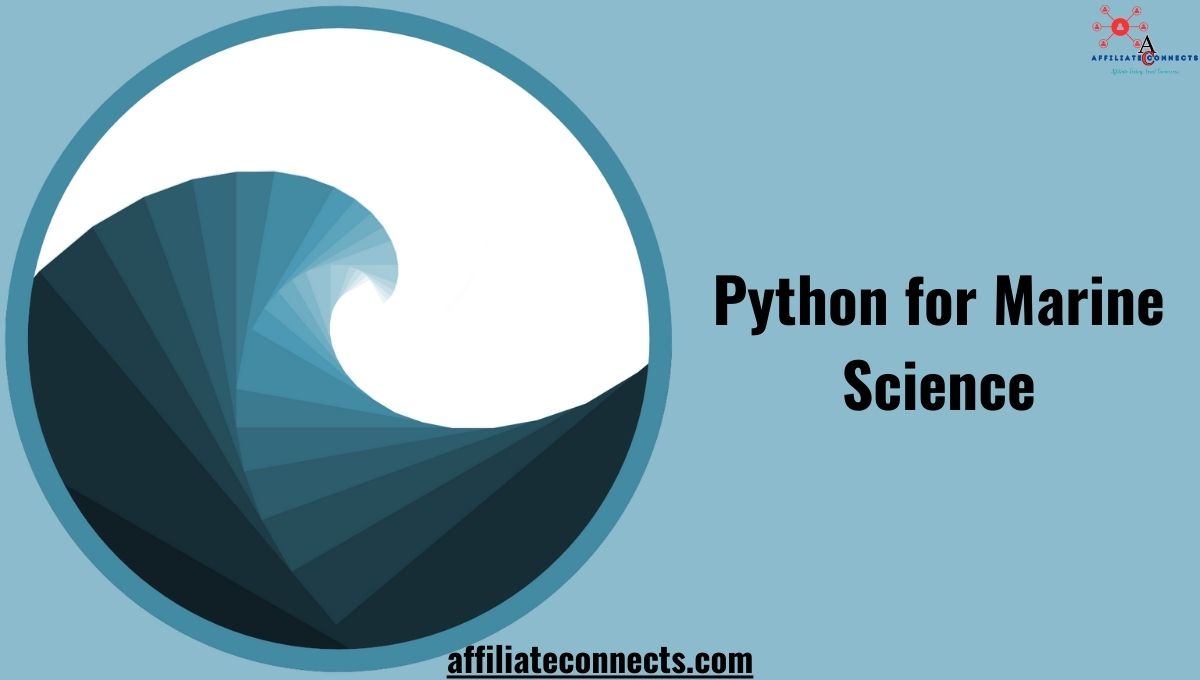The use of Python for marine science has grown significantly. Researchers depend on Python for its versatility and efficiency. This programming language supports diverse marine studies. It simplifies statistics evaluation, modeling, and visualization.
Marine scientists analyze complex oceanic data. Python affords equipment for these obligations. Moreover, it integrates with different technology effortlessly. As a result, Python is now essential in marine studies. This article explores the advantages and applications of Python for marine technological know-how in element.
Introduction to Python for Marine Science
Python is a sturdy programming language. It facilitates remedy complicated marine troubles. Researchers use Python for statistics series and evaluation. Moreover, its libraries decorate ocean modeling. The Python for marine science programs are infinite.

Python is beginner-friendly. Its simplicity attracts many marine scientists. Additionally, its open-source nature makes it handy. With Python, scientists deal with large datasets effortlessly. Moreover, it helps gadget studying for advanced studies. This makes Python for marine technology essential.
The following sections highlight the importance of Python in marine research. We will speak its advantages, challenges, and packages.
Why Choose Python for Marine Science?
Data Analysis and Visualization

Python excels in records analysis. Libraries like Pandas and NumPy simplify statistics dealing with. Visualization gear like Matplotlib beautify records presentation.
Machine Learning Applications
Python helps device mastering. This aids in predicting ocean styles. Libraries like TensorFlow and Scikit-study are useful.
Cost-Effective Solutions
Python is free and open-source. Researchers save charges the usage of Python tools. This is a key benefit of Python for marine science.
Real-Time Monitoring
Python allows real-time records collection. Scientists screen ocean adjustments right away. This improves studies accuracy.
Benefits of Python in Marine Science
Python simplifies complicated computations, making it an invaluable device for marine scientists. It correctly strategies big datasets, that’s critical for studying tremendous and elaborate marine ecosystems. Researchers depend on Python to research oceanic variables like temperatures, salinity stages, and biodiversity trends. These computations, frequently requiring excessive accuracy, are made extra doable with Python’s effective libraries inclusive of NumPy and SciPy.
Another considerable gain of Python is its capacity to automate repetitive responsibilities. For example, Python scripts can streamline tedious procedures like information cleansing, formatting, and validation. This time-saving capability lets in researchers to focus more on deciphering results as opposed to preparing data. Automation also reduces the danger of human mistakes, ensuring higher reliability in studies findings.
Additionally, Python excels in integrating with GIS (Geographic Information System) software, permitting particular mapping of marine ecosystems. Libraries which include GeoPandas and gear like ArcPy enhance geospatial analysis, supporting scientists visualize underwater habitats, display adjustments over time, and plan conservation strategies. These integrations make Python an critical device for addressing environmental challenges, which includes monitoring coral bleaching or analyzing the migration styles of marine species.
Python’s open-supply nature additionally fosters collaboration inside the marine technological know-how network. Researchers can proportion and enhance code, ensuring that revolutionary solutions to complex problems are accessible to all. The great ecosystem of Python libraries, inclusive of PySeidon and PyOcean, caters especially to oceanographic research, making it simpler to simulate ocean currents, are expecting weather patterns, and verify human impacts on marine lifestyles.
Graph: Growth of Python Usage in Marine Science

The above graph suggests Python’s growing reputation. Marine scientists increasingly undertake Python for research duties.
Applications of Python in Marine Science
Ocean Modeling

Python performs a important role in modeling ocean currents and waves, which are critical for knowledge oceanic behavior. Tools like PyNEMO, an interface for the NEMO (Nucleus for European Modelling of the Ocean) software, permit researchers to simulate complicated ocean dynamics. These models help expect phenomena along with storm surges, tidal moves, and wave styles, helping in catastrophe preparedness and marine navigation. Additionally, Python’s compatibility with excessive-performance computing ensures simulations run efficaciously. For example, scientists use these fashions to assess coastal erosion or look at the interplay between ocean currents and climate structures.
Marine Biodiversity Studies
Python empowers marine biologists to analyze species facts and examine biodiversity tendencies. Libraries like Biopython offer tools for computational biology, enabling researchers to method DNA sequences, phylogenetic trees, and populace genetics records. Python simplifies the combination of various datasets, inclusive of satellite imagery and underwater sensors, assisting become aware of crucial habitats or examine the effect of human sports on marine ecosystems. For instance, Python scripts can become aware of overfished areas or coral reef degradation developments, assisting conservation efforts.
Climate Change Analysis
Python is instrumental in tracking ocean temperatures, a key indicator of climate trade. By analyzing satellite and buoy temperature facts, Python enables hit upon warming patterns and predict their consequences, which includes growing sea degrees and modifications in marine biodiversity. Visualization libraries like Matplotlib, Seaborn, and Plotly make it easier to provide these tendencies efficaciously, fostering attention among policymakers and the public. Python additionally supports device learning models to undertaking future temperature traits, supporting researchers prepare for capability climate situations.
Pollution Monitoring
Ocean pollution, including plastic waste and oil spills, threatens marine lifestyles and ecosystems. Python allows tracking and reading pollutants statistics using libraries like Pandas for facts processing and Geopandas for spatial evaluation. Researchers can become aware of pollutants hotspots, degree pollutant ranges, and model their unfold the use of equipment like PySAL or Rasterio. This facts-driven approach facilitates prioritize cleanup efforts and expand mitigation techniques. For instance, Python can map microplastic distribution, assisting governments cognizance on regions requiring instant intervention. Challenges and Solutions of Using Python for Marine Science
Learning Curve
Many marine scientists face demanding situations in adopting Python, in particular the ones with out a programming history. However, the supply of on line tutorials, interactive systems like Jupyter Notebooks, and network forums simplifies the getting to know system. Platforms which include Codecademy and DataCamp provide beginner-friendly Python courses, while the open-supply nature of Python encourages collaboration and sharing of code amongst researchers.
Data Overload
Marine technology often includes studying massive datasets from satellites, underwater sensors, and simulation models. Handling these massive datasets can overwhelm general tools. High-performance libraries like Dask and PySpark cope with this through allowing parallel processing and dispensed computing. These equipment allow scientists to address terabytes of records correctly, making sure quicker analysis and better insights.
Limited Marine-Specific Tools
Despite Python’s versatility, there are exceptionally few libraries designed specially for marine science. Researchers frequently need to broaden custom scripts to address precise demanding situations, inclusive of processing oceanographic information formats or integrating numerous datasets. However, collaboration amongst researchers worldwide has led to the advent of area of interest libraries and equipment like PyNEMO and PySeidon. Open-supply initiatives and workshops further improve tool availability, fostering innovation and addressing gaps in marine-unique Python assets.
Chart: Python Libraries for Marine Science

The chart shows a list of ten Python libraries typically used in marine technology, at the side of their descriptions. The libraries are indexed on the x-axis, and their descriptions are supplied on the y-axis. The chart’s identify is ‘Python Libraries for Marine Science.’
FAQs About Python for Marine Science
1. What makes Python appropriate for marine technological know-how?
Its simplicity, libraries, and open-supply nature make it perfect.
2. Which Python libraries are satisfactory for marine research?
Pandas, NumPy, Matplotlib, and Biopython are notable picks.
3. Can Python version ocean currents?
Yes, gear like PyNEMO are powerful for ocean modeling.
Four. Is Python loose for researchers?
Yes, Python is open-source and unfastened to use.
Five. How does Python help biodiversity studies?
Biopython facilitates analyze genetic and biodiversity records.
6. Are there Python gear for pollution monitoring?
Yes, Python tracks and analyzes pollutants information efficaciously.
7. Can novices use Python for marine science?
Yes, Python’s beginner-friendly nature makes it available.
8. Does Python integrate with GIS software?
Yes, gear like ArcPy enhance geospatial evaluation.
9. What challenges get up in the usage of Python?
Challenges include the mastering curve and statistics overload.
10. How does Python support weather alternate research?
Python analyzes ocean temperature and weather traits.
Conclusion: Python for Marine Science
The function of Python for marine science is transformative. It simplifies information managing and enhances research accuracy. Python’s libraries assist numerous marine programs. From ocean modeling to biodiversity research, Python is priceless.
Challenges exist but are practicable. Online resources ease the mastering method. Custom scripts deal with precise marine needs.
Investing in Python competencies advantages marine researchers immensely. It’s a price-effective and green device. Embrace Python today and revolutionize your marine research.
Read more about Science,Technology and other categories on AffiliateConnects


